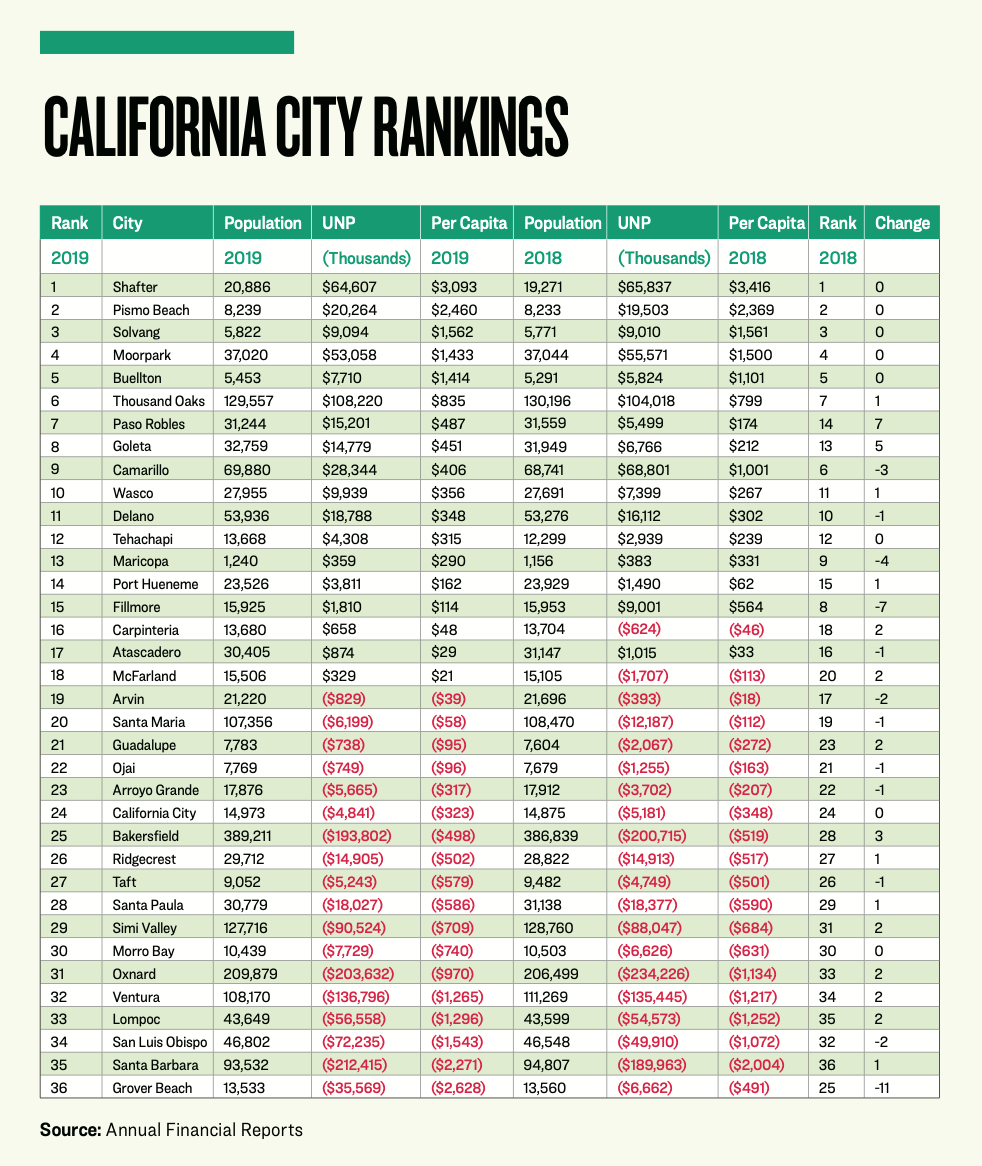Commentary
Keeping track of your personal finances is important. But, we should also pay attention to the financial well-being of our local cities, as it can impact the community.
Until now, we’ve looked at Southern California cities in six counties: Orange, Los Angeles, Riverside, San Bernardino, San Diego, and Imperial. As the city of Huntington Park in Los Angeles County is still waiting for the release of its audited financial statements for the year ending June 30, 2020, I’ve focused on providing the official data for 2019.
For the 2019, 2018, and 2017 comparatives for Orange County’s 34 cities, see Unions Are Hurting the Finances of Orange County Cities. For the 2019 and 2018 comparisons for the 88 cities in Los Angeles County, see Cities in Los Angeles County Finally Issue Their Financial Reports … From 2019, and the Inland Empire’s 52 cities, see Every City in the Inland Empire Ranked According to Financial Health. And for the southern border, with San Diego and Imperial County’s 25 cities, see San Diego in Last Place in Regional Fiscal Rankings. These four zones cover 199 of the Golden State’s cities.
Now let’s look at the 36 cities in Ventura, Santa Barbara, San Luis Obispo, and Kern Counties. These are the counties you enjoy when driving north up either the 101, 5, or 99 Freeways. Kern County provides you with the famous Grapevine route over the Tehachapi Mountains, while the coastal counties provide you with some excellent wineries and tourist destinations, like the Danish-inspired city of Solvang.
I look for two things when reviewing each city’s 2018 and 2019 Annual Comprehensive Financial Reports, their populations (if provided) and the unrestricted net positions, from their basic financial statements. Dividing one into the other provides a metric to gauge the fiscal temperature. A positive number is the goal. A negative number indicates a deficit, and each city’s elected leadership should be pursuing a positive per capita in the years ahead.
As you can see from the graph below, 32 of the cities stayed pretty much in place during the year ending June 30, 2019, moving three positions or less in the rankings.
Two cities, Goleta and Paso Robles, made major moves in a positive direction. Paso Robles was able to move up seven places by reducing its restricted funds dedicated to debt service and facility expansion by $2.6 and $3.7 million, respectively. The bulk of the savings came from refinancing (refunding) General Obligation Bonds. A more aggressive posture of reducing the city’s unfunded actuarial accrued defined benefit pension liabilities by $1.2 million was another contributing factor to the city’s increase of $9.7 million in unrestricted net assets.
Goleta, just a little north of the city of Santa Barbara, has had some volatility with its unrestricted net assets in recent years. It was $19.4 million in 2017, dropping to $6.8 million in 2018, but with higher than projected revenues and spending less than forecast, it moved back up to $14.8 million in 2019. This is the joy of relying on the economy and watching every dollar that is spent. This allowed the city to move up five places.
The city of Fillmore saw its unrestricted net position drop by $7.2 million because of declaring a note receivable of $7.5 million as likely to be uncollectable. The financial statement disclosures were not specific, but hints at a residual from the elimination of the city’s redevelopment agency and the financial repercussions that resulted as it is the successor agency.
Redevelopment agencies were perceived as abusive by Governor Jerry Brown, so he closed them down in 2011. The reverberations were felt across the state for cities and counties that had implemented them to address blighted areas. When Brown realized how much money these agencies had accumulated, he went after them, requiring their tax dollars to go to school districts and local governments, thus freeing up some $2 billion to balance the state’s budget.
The city of Grover Beach dropped 11 places and landed in dead last by moving $12.1 million from unrestricted funds to a restricted account for street improvements. It also increased the amount reflected in its net investment in capital assets by $14.5 million, but there was not a similar increase in its fixed assets or a reduction in mortgage related debt on its balance sheet. This is because it was a restatement of the prior year’s balance sheet. But both explain the majority of the $28.9 million drop in this city’s unrestricted net deficit.
It now behooves the elected leaders and hired management of the city of Grover Beach to provide a financial roadmap as to how it plans to move back up in the rankings in the years to follow.
In the one year that is covered, there was a minimal increase in the population of this area of California. It makes one wonder why every city is being forced by Sacramento to build more housing. Perhaps the hidden agenda is for half of these cities, those with unrestricted net deficits, to be looking to grow their way out of their predicaments. But I’m sure the pristine city of Santa Barbara would not consider that as a viable option.
As I’ve mentioned before, many cities in your area could be on the brink of financial disaster. And it could mean higher taxes, severe budget cuts, refinancing of debts, sales of property, or all of the above to make it through a serious recession. Or, in the case of bankruptcy, reducing or eliminating employee benefit liabilities. Is your city prepared?
Views expressed in this article are the opinions of the author and do not necessarily reflect the views of The Epoch Times.



















































